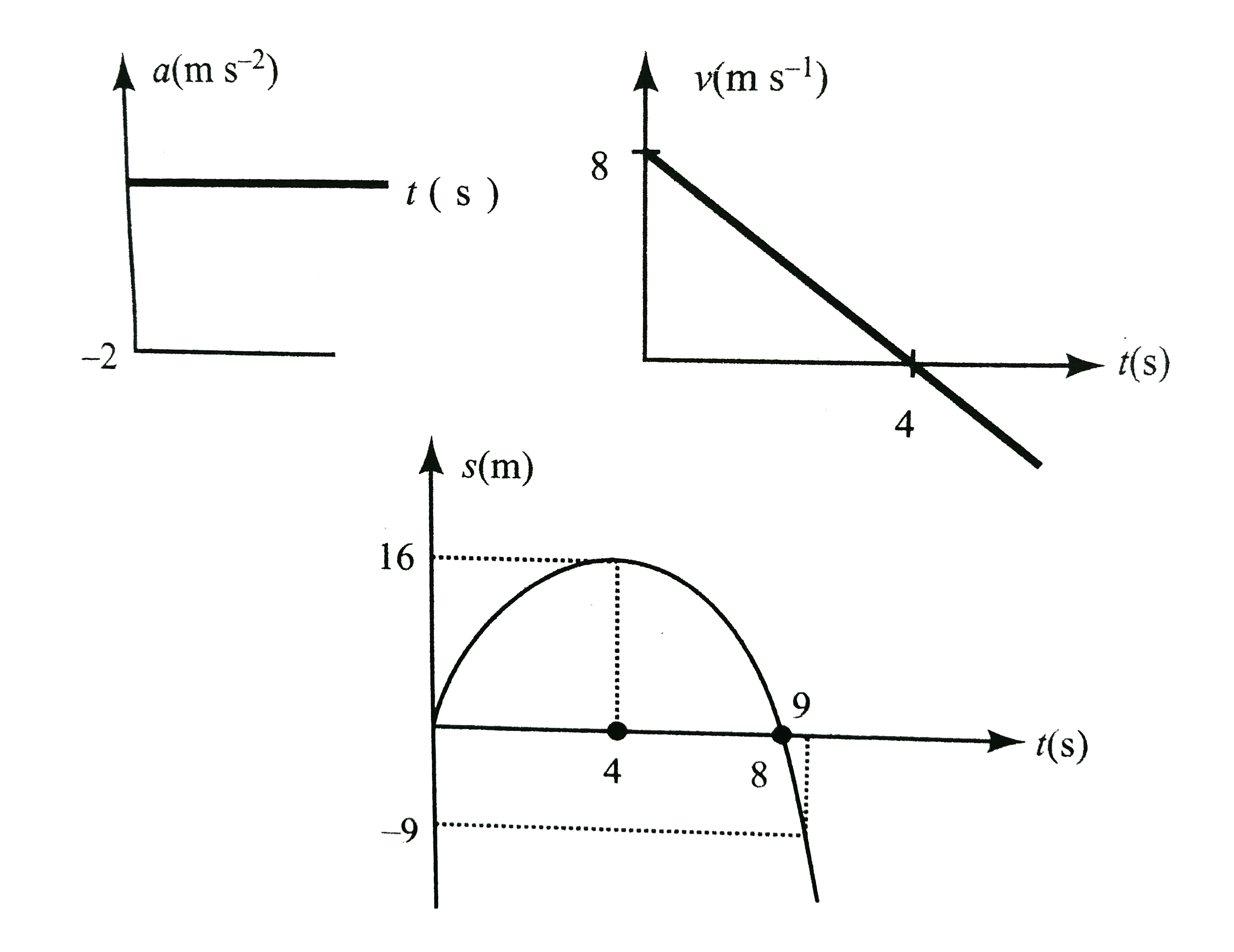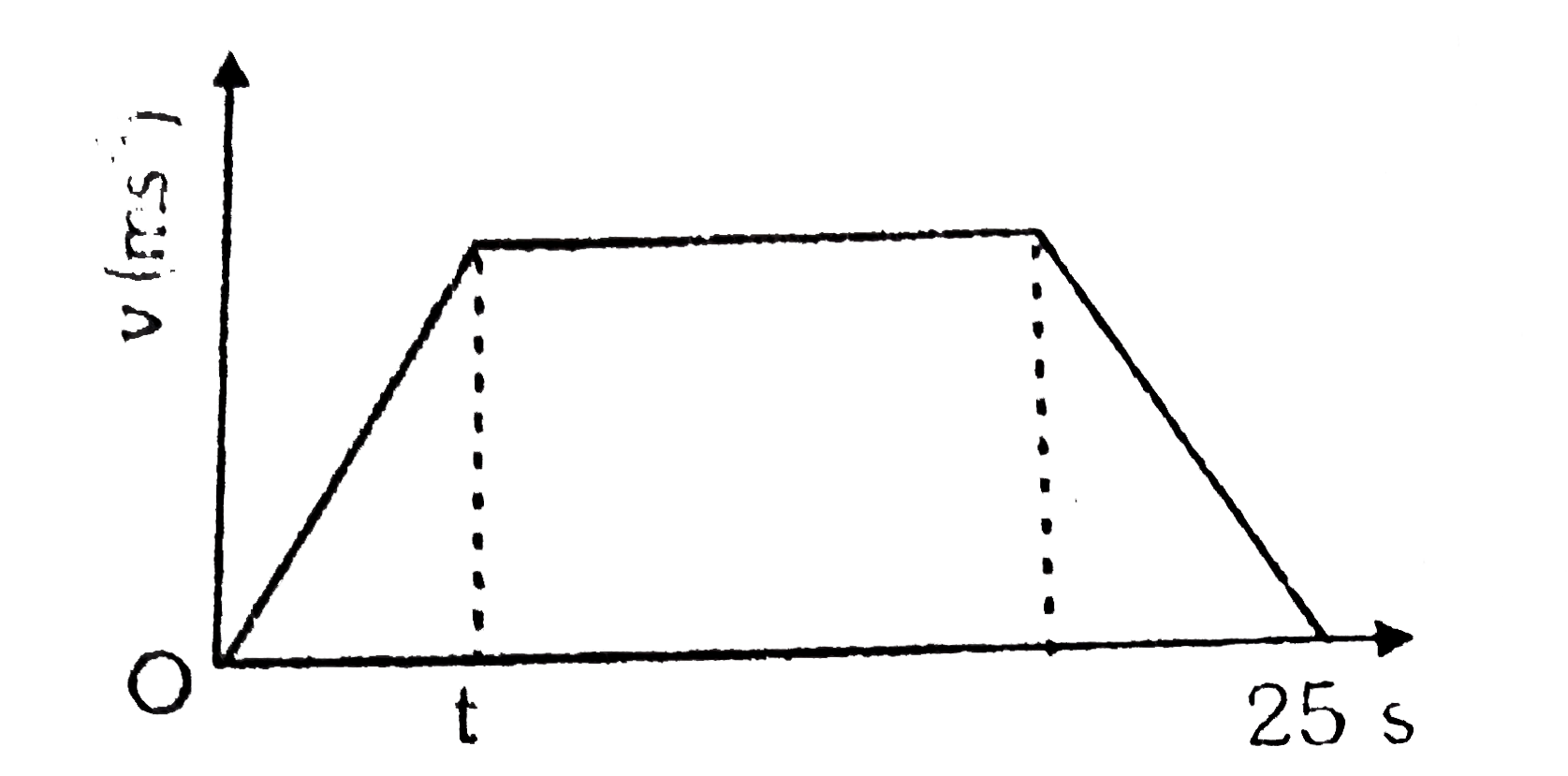A body starts at t=0 with velcoity u and travels along a straight linge. The body has a constant acceleration(a). Draw the acceleration-time graph from t=0 to t=10s for the following cases:
a. u=8ms−1, a=2s^(-2)<br>b.u=8 ms^(-1),a=−2ms−2
c. u=−8ms−1 ,a=2 ms^(-2)<br>d.u=-8ms^(-1),a=−2ms−2.
a. a=2ms−2,u=8ms1
v=u+at=8+2t,S=ut+12at2=8t+t2
 .
.
b. a=−2ms−2,u=8ms−1
v=u+at=−2t,S=ut+12at2=8t−t2
 .
.
c. a=2ms−2,u=−8ms−1
v=u+at=−82t,S=ut+12at2=−8t+t2
 .
.
d. a=−2ms−2,u=−8ms−1
v=u+at=−8−2t,S=ut+12at2=−8t−t2
 .
.
Topper's Solved these Questions
- BOOK - CENGAGE PHYSICSCHAPTER - KINEMATICS-1EXERCISE - Subjective29videos
KINEMATICS-1
- BOOK - CENGAGE PHYSICSCHAPTER - KINEMATICS-1EXERCISE - Single Correct52videos
KINEMATICS-1
- BOOK - CENGAGE PHYSICSCHAPTER - KINEMATICS-1EXERCISE - Exercise 4.315videos
KINEMATICS-1
- BOOK - CENGAGE PHYSICSCHAPTER - GRAVITATIONEXERCISE - INTEGER_TYPE1videos
GRAVITATION
- BOOK - CENGAGE PHYSICSCHAPTER - KINEMATICS-2EXERCISE - Exercise Integer9videos
KINEMATICS-2
Similar Questions
A particle starts moving with initial velocity u=25ms−1 and retardation a=−2ms−2. Draw the velocity-time graph.
View SolutionA body starts with an initial velocity of 10ms-1 and is moving along a straight line with constant acceleration. When the velocity of the particle is 50ms- the acceleration is reversed in direction. The speed of the particle when it again reaches the starting point is
View Solution
Knowledge Check
- Question 1 - Select One or More
At time t=0, a car moving along a straight line has a velocity of 16ms−1. It slows down with an acceleration of −0.5tms−2, where t is in second. Mark the correct statement (s).
AThe direction of velocity changes at t=8sBThe distance travelled in 4 s is approximately 58.67 mCThe distance travelled by the particle in 10 s is 94 mDThe speed of particle at t=10 s is 9ms−1 - Question 2 - Select One
A body of mass 2kg travels according to the law x(t)=pt+qt2+rt3 where p=3ms−1,q=4ms−2 and r=5ms−3 .
A136NB134NC158ND68N - Question 3 - Select One
The velocity- time graph of the particle moving along a straight line is shown. The rate of acceleration and deceleration is constant and it is equal to 5ms−2. If the average velocity during the motion is 20ms−1, then the value of t is
 A3 secB5 secC10 secD12 sec
A3 secB5 secC10 secD12 sec
A particle starts from rest at t=0 and moves along a straight line with a variable acceleration given by a (t)=(3t+1)ms−2 ,where t],[ is in seconds.The velocity of the particle at t=4s is
View SolutionThe velocity of a particle are given by (4t–2) ms–1 along x–axis. Calculate the average acceleration of particle during the time interval from t = 1 to t = 2s.
View SolutionThe acceleration time graph of a particle is shown in the Fig. 2 (CF). 11. At time t=10s is the particle is 8ms−1. Its velocity t=10s is.
 .View Solution
.View SolutionTwo cars (A) and (B) travel in straight line . The distance of (A) from the starting point is given as a function of time be aA(t)=pt+qt2, with p=2.60ms−1 and q=1.20ms−2. The distance of (B) from the starting pint is xB(t)=rt2−st3 are r=2.80ms−2 and s=0.20ms−3. Answer the following questions ,
At what time (s) do the cars (A) and (B) have the same acceleration ?View SolutionA body is thrown up in a lift with a velocity 5ms−1 relative to the lift and the time of flight is found to be 0.8 s. The acceleration with which the lift is moving up is (g=10ms−2)
View Solution

